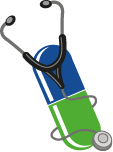ECDC patient story: Paolo

Paolo fell ill with a serious urinary infection with an E.coli resistant to many antibiotics. It took two months and three courses of different antibiotics before Paolo's infection was successfully treated. Nobody knows where he picked up the infection.
Paolo is a 55 year old University Professor in Rome, Italy. In August of 2010, Paolo had gone motor-boating alone to Ponza, a small island off the coast of Italy. After arrival in Ponza, he felt that he had symptoms of a urinary tract infection, but did not pay too much attention at the time, because he thought his symptoms could have been due to dehydration from the summer heat.
After a while, however, he developed a fever with shaking chills and the symptoms of his urinary tract infection intensified. He consulted with his brother-in-law, who is a medical doctor and was spending his holidays in Ponza. His brother-in-law suggested that he take ciprofloxacin, a fluoroquinolone antibiotic which is one of the most frequently used antibiotics for urinary tract infections. Ciprofloxacin can be given by mouth, so is easy to take and is usually effective in treating urinary tract infections. His condition did not improve over the next three days and his fever did not abate. Despite this, he continued the course of ciprofloxacin for a week or more, with the hope of being well enough to motor-boat back to Rome and seek a full medical examination and laboratory tests.
Paolo was on the island of Ponza where there was no possibility of laboratory testing of his urine to better understand which antibiotics the bug could be treated with. He was aware that it would be important to know the results of his urine culture in order for a doctor to prescribe the correct antibiotic.
Since he was afraid to motor-boat back to Rome by himself in case he became very ill, his brother-in-law accompanied him. On arrival at the mainland, he immediately went to a large hospital in Rome where he had a urine culture and clinical examination, which confirmed he had a complicated urinary tract infection. He was also found to have an enlarged prostate gland, which was the likely cause of his infection.
The culture showed that he was infected with a bacterium called Escherichia coli (E. coli), which produced an extended-spectrum beta-lactamase (ESBL) and was resistant to many antibiotics, including ciprofloxacin. The laboratory results showed that the only antibiotics that Paolo’s E. coli was sensitive to were amoxicillin/clavulanic acid, trimethoprim-sulfamethoxazole, fosfomycin and finally, a class of last line antibiotics called the carbapenems. Paolo could not take trimethoprim-sulfamethoxazole, which is an oral antibacterial agent, because he was allergic to it. Carbapenems can only be given intravenously, meaning spending some time at the hospital. He was prescribed amoxicillin/clavulanic acid, which he took by mouth for four weeks. His condition improved, but four days after his treatment was discontinued, he began having fever again and his symptoms of a urinary tract infection returned.
He then called a friend of his, an infectious disease specialist, who suggested that he take fosfomycin by mouth in the correct dose for his infection. He took this for 21 days. His symptoms resolved after that and he has been well ever since.
Commentary: case notes
While on holiday, Paolo developed a complicated urinary tract infection with an E. coli isolate that produced extended-spectrum-beta lactamases (ESBL). ESBLs are enzymes that make bacteria, most commonly E. coli and Klebsiella pneumoniae, resistant to most β-lactam antibiotics, including penicillins, cephalosporins and aztreonam. Paolo’s E. coli was found to be sensitive only to amoxicillin/clavulanic acid, trimethoprim-sulfamethoxazole, fosfomycin and to the carbapenems, a class of last-line antibiotics, which are the treatment of choice for bacteria that produce ESBLs.
Important points to note in this case are that Paolo had developed an infection with a community-acquired highly resistant E. coli. Notably, hisE. coli was resistant to the fluoroquinolones, a class of antibiotics that can also be taken by mouth to treat urinary tract infections, including complicated ones.
The carbapenems, to which his E.coli was sensitive, are the antibiotics of choice in patients with infections with ESBL-producing bacteria. Aside from the carbapenems, which are given intravenously and require some type of hospital stay, there were only few antibiotics that he could take that would be effective against his infection, and few that he could take by mouth.
Additionally, he was allergic to one of them, trimethoprim-sulfamethoxazole. The antibiotic that Paolo ended up taking was amoxicillin-clavulanic acid, which he took by mouth. This antibiotic can appear sensitive in the laboratory, but is actually not effective against ESBL E. coli when given for treatment in humans. This is why his condition apparently improved during amoxicillin-clavulanic acid treatment, but the infection was not eradicated and suddenly relapsed after the therapeutic course.
It is concerning that such highly resistant bacteria are spreading in the community and causing infections in patients with no contact with the hospital. Globally, ESBL- producing bacteria are being found as the cause of community-acquired infections, and very frequently urinary tract infections. It is important to treat with the right antibiotic, since these types of highly resistant bacteria can cause patients to be sicker and to have a worse outcome. An important message for patients is that the right antibiotic needs to be prescribed for treatment. It is therefore necessary to see a doctor and to have microbiological testing performed.

